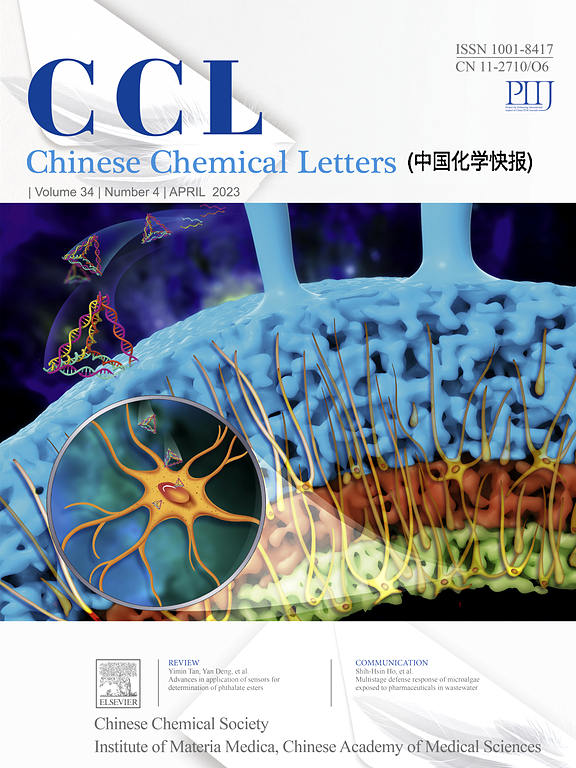A chiral supramolecular nanocatcher prepared by d-biotin-pillar[5]arene for the selective capture and targeted delivery of oxaliplatin enantiomers
IF 9.4
1区 化学
Q1 CHEMISTRY, MULTIDISCIPLINARY
引用次数: 0
Abstract
Chiral anticancer drugs are the subject of ongoing research due to their optical characterization and pharmacological effects. Achieving a single enantiomer of a chiral anticancer drug is arduous, but it can significantly improve its pharmacokinetics for tumor therapy. Here, the chiral nanocatchers, known as d-biotin-P5⊃MCC NCs, were designed and prepared based on host-guest self-assembly between d-biotin anchored pillar[5]arene (d-biotin-P5) and myristoyl chloride choline (MCC). d-Biotin-P5⊃MCC NCs featuring the chiral separation and enzyme-induced disassemble were evaluated for their ability to selectively capture and subsequently target the release of (R,R)-OXA enantiomers into tumor cells. Furthermore, the use of d-biotin-P5⊃MCC NCs has demonstrated a significant enhancement in the intracellular uptake of OXA, with the drug being efficiently released to MCF-7 breast cancer cells. This has led to a superior inhibitory effect on MCF-7 cells when compared to free OXA, while also reducing the cytotoxicity of the drug in HEK 293 human embryonic kidney cells. This research not only paves a promising way for the fabrication of chiral supramolecular nanocarriers but also holds the potential to improve the processes of chiral drug separation and targeted therapy.

d-生物素柱[5]芳烃制备的手性超分子纳米捕集剂,用于选择性捕获和靶向递送奥沙利铂对映体
手性抗癌药物由于其光学特性和药理作用而成为持续研究的主题。获得手性抗癌药物的单一对映体是一项艰巨的任务,但它可以显著改善其在肿瘤治疗中的药代动力学。在这里,基于d-生物素锚定柱[5]芳烃(d-生物素- p5)和肉豆肉酰氯胆碱(MCC)之间的主-客自组装,设计和制备了手性纳米捕集剂d-生物素- p5、MCC nc。d-Biotin-P5、MCC nc具有手性分离和酶诱导分解的特性,我们评估了它们选择性捕获并随后靶向(R,R)-OXA对映体释放到肿瘤细胞中的能力。此外,d-生物素- p5、MCC nc的使用已经证明了OXA细胞内摄取的显著增强,药物被有效地释放到MCF-7乳腺癌细胞中。与游离OXA相比,这导致MCF-7细胞具有更好的抑制作用,同时也降低了药物对HEK 293人胚胎肾细胞的细胞毒性。该研究不仅为手性超分子纳米载体的制备开辟了一条光明的道路,而且具有改善手性药物分离和靶向治疗工艺的潜力。
本文章由计算机程序翻译,如有差异,请以英文原文为准。
求助全文
约1分钟内获得全文
求助全文
来源期刊

Chinese Chemical Letters
化学-化学综合
CiteScore
14.10
自引率
15.40%
发文量
8969
审稿时长
1.6 months
期刊介绍:
Chinese Chemical Letters (CCL) (ISSN 1001-8417) was founded in July 1990. The journal publishes preliminary accounts in the whole field of chemistry, including inorganic chemistry, organic chemistry, analytical chemistry, physical chemistry, polymer chemistry, applied chemistry, etc.Chinese Chemical Letters does not accept articles previously published or scheduled to be published. To verify originality, your article may be checked by the originality detection service CrossCheck.
 求助内容:
求助内容: 应助结果提醒方式:
应助结果提醒方式:


